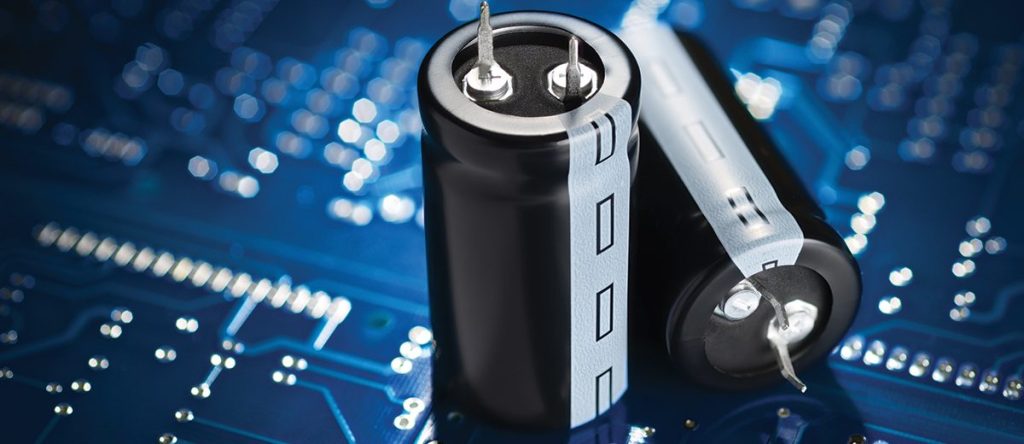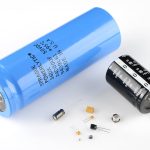What is Capacitor?
Capacitor is also known as condenser. This is one of the passive components like resistor. Capacitor is generally used to store the charge. In capacitor the charge is stored in the form of “electrical field”. Capacitors play a major role in many electrical and electronic circuits.
Generally, a capacitor has two parallel metal plates which are not connected to each other. The two plates in the capacitor are separated by non conducting medium (insulating medium) this medium is commonly known as Dielectric.
Why capacitors are important?
Capacitors have many properties like
1. They can store the energy and it can dissipate this energy to the circuit when ever required.
2. They can block DC and allow AC to flow through it, and this can couple one part of the circuit with the other.
3. Circuits with capacitors depend on the frequency, so can be used to amplify certain frequencies.
4. As the capacitors when applied with AC input , the current leads the voltage and thus in power applications it increases the pay load power and makes it more economical.
5. It allows high frequencies and so it can be used as a filters either to filter low frequencies or to collect high frequencies.
6. As the reactance and frequency of the capacitor are inversely related, this can be used to increase or decrease the circuit impedance at certain frequency and can be used as filter.
Likewise, capacitors exhibit many properties , when used in AC or DC circuits and hence they play important role in electrical and electronic circuits.
Construction of a Capacitor
As said before , there are different types of capacitors. These different types will have different type of construction. A Parallel plate capacitor is the simplest capacitor. Let us understand the construction of this capacitor.
It consists of two metal plate separated by a distance. The space between these two plates is filled with a dielectric material. The two leads of the capacitor are taken from these two plates.
The capacitance of the capacitor depends on the distance between the plates and area of the plates. Capacitance value can be changed by varying any of these parameters.
A variable capacitor can be constructed by making one of these plates fixed and other moving.
Dielectric Of a Capacitor
Dielectric acts as an insulating material between the plates . Dielectric can be any non conducting material such as ceramic, waxed paper, mica, plastic or some form of a liquid gel.
Dielectric also plays an important in deciding the value of capacitance. As the dielectric is introduced between the plates of the capacitor ,its value increases.
Different dielectric materials will have different dielectric constants ,however this value is >1.
Dielectric can be of two types
1. Polar dielectrics: These dielectrics will have permanent dielectric movement
2. Non Polar dielectrics: These will have temporary dielectric moment. By placing them in a electric field they can be induced with dipole moments.
Working
As said before capacitor consists of two conductor separated by a dielectric , when there is any potential difference between the two conductors electric potential is developed.This causes the capacitor to charge and discharge.
Let us understand this in a practical way. When the capacitor is connected to a battery(a DC source) , current starts flowing through the circuit .
Thus negative charge is accumulated on one plate and positive charge is accumulated on the other plate. This process continuous until the capacitor voltage reaches supply voltage.
When the charging voltage is equal to the supply voltage capacitor stops charging further even though the battery is connected. When the battery is removed two plates will be accumulated with positive and negative charges. Thus the charge is stored in the capacitor.
But when the supply voltage is from an AC source it charges and discharges continuously .The rate of charging and discharging depends on the frequency of the source.
Capacitance of a Capacitor
Capacitance is the property of the capacitor that defines the maximum amount of electrical charge stored in it.it exists in nature everywhere.
Capacitance may vary depending on the shape of the capacitor. Capacitance can be calculated by using the geometry of the conductors and dielectric material properties. Let us see the capacitance of a parallel plate capacitor.
Capacitance is defined as the ratio of charge (Q) on the either plates to the potential difference(V) between them ,

Capacitance of the capacitor can be increased by increasing the number of plates, which helps to maintain the same size of the capacitor. Here, area of the plates is increased.


